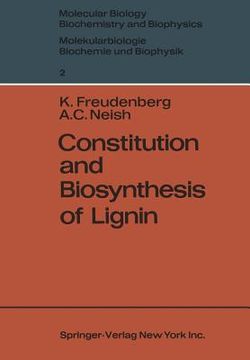Share
constitution and biosynthesis of lignin
Karl Freudenberg
(Author)
·
A. C. Neish
(Author)
·
Springer
· Paperback
constitution and biosynthesis of lignin - Freudenberg, Karl ; Neish, A. C.
Choose the list to add your product or create one New List
✓ Product added successfully to the Wishlist.
Go to My Wishlists
Origin: U.S.A.
(Import costs included in the price)
It will be shipped from our warehouse between
Monday, June 17 and
Wednesday, July 03.
You will receive it anywhere in United Kingdom between 1 and 3 business days after shipment.
Synopsis "constitution and biosynthesis of lignin"
Among terrestrial plants the vascular plants are the largest and the most con- spicuous. Because of the presence of lignified supporting and conducting tissues such as xylem, terrestrial vascular plants can develop large upright forms. Composed mainly of xylem tissue, the stems of trees are characterized by elongated cells with thickened walls, impregnated by lignin. Diagrams of xylem cells (vessels, tracheids and fibers) can be seen in textbooks of plant anatomy (e. g. ESAU, 1953). A cross section of xylem tissue is shown in the section of this volume written by Professor FREUDENBERG (Fig. 1, p. 98). In general the occurrence of lignin in the plant kingdom is associated with the presence of these cells which comprise xylem. Thus lignin is found in vascular plants such as lycopods, ferns, gymnosperms and angiosperms, whereas it is absent from simple plants such as fungi, and from all other organisms. The mosses are an exceptional group which do not have the cells characteristic of xylem tissue but which contain lignin-like materials. These "moss lignins" have been discussed by Professor FREUDENBERG in this volume, and some doubts have been expressed as to whether or not they are true lignins (FR. * pp. 113-114). Work on the chemistry of lignin indicates that it is a polymer derived from the phenylpropanoid compound, coniferyl alcohol and related alcohols.
- 0% (0)
- 0% (0)
- 0% (0)
- 0% (0)
- 0% (0)
All books in our catalog are Original.
The book is written in English.
The binding of this edition is Paperback.
✓ Producto agregado correctamente al carro, Ir a Pagar.

